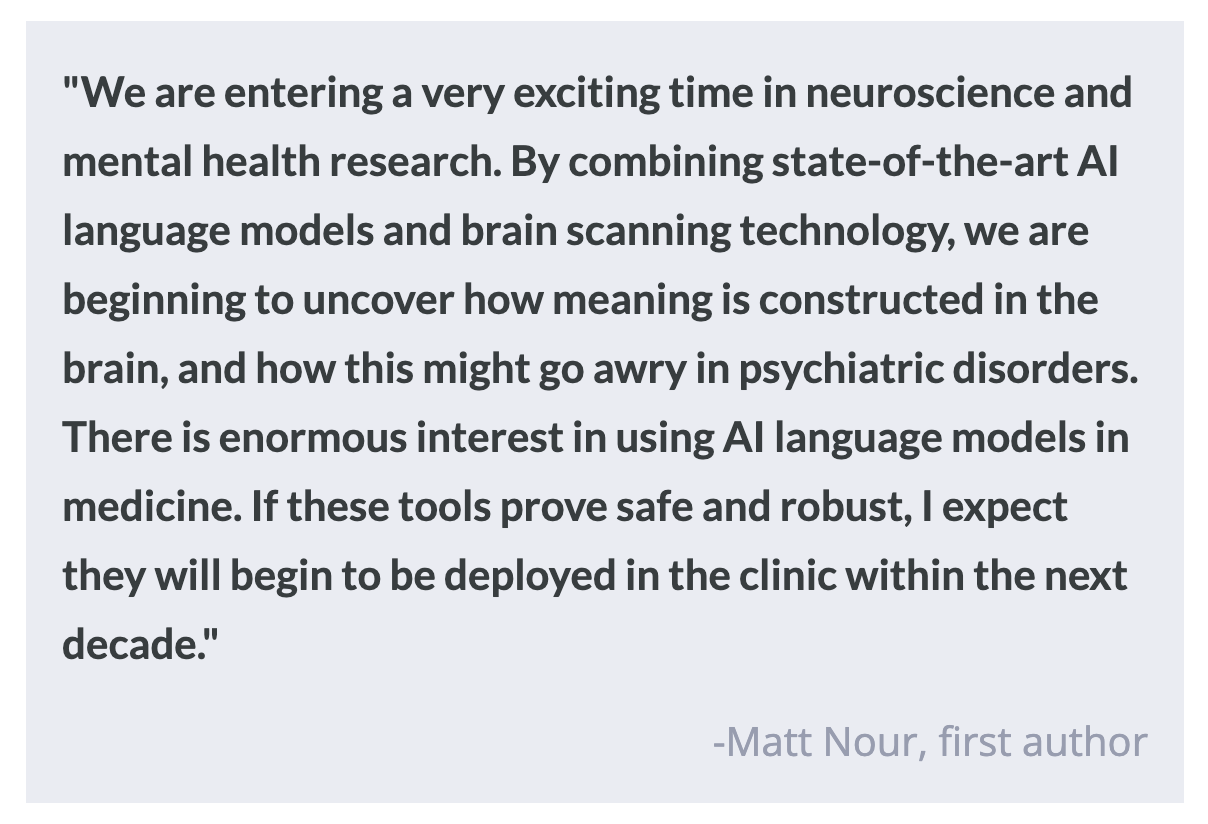The Effects of Schizophrenia on Cognitive Mapping
Post by Christopher Chen
The takeaway
We use cognitive maps to help make sense of the world, but these maps might be distorted and disorganized in people with schizophrenia (PScz). Researchers discovered that the reduced influence of semantic similarity and abnormal hippocampal ripples (i.e. transient bursts of high-frequency activity) in PScz contribute to cognitive disorganization found in PScz.
What's the science?
Schizophrenia is a prevalent neuropsychiatric disorder causing conceptual disorganization, abstract reasoning difficulties, and language coherence issues. The presence of these symptoms, collectively known as "formal thought disorder," predicts impaired social functioning. Schizophrenia is also associated with abnormalities in association-guided cognition, where relationships between memories, concepts, or objects in the brain, known as "relational knowledge," are disrupted.
Recent studies suggest that the hippocampal–entorhinal cortex (HEC) encodes abstract relational knowledge. In rodents, researchers have shown that HEC cells encode spatial relationships during navigation of the environment and exhibit neural "replay" during rest. In humans, the HEC also encodes associations in abstract domains, supporting a domain-general "cognitive mapping" function that spans conceptual and semantic spaces. Furthermore, hippocampal ripple power, a neural output linked to cognitive map stabilization, is known to be disrupted in PScz. However, the impact of schizophrenia on cognitive maps as well as the neural signatures of these outputs are unknown. In a recent article in PNAS by Nour et al., researchers used a combination of verbal fluency analysis and brain imaging to help fill gaps in understanding the impact of schizophrenia on cognitive mapping.
How did they do it?
To assess verbal fluency, 52 participants (26 PScz and 26 controls) were given 2 separate language-based tests, each 5 minutes long. For the first test, they were asked to name as many animals as they could in the allotted time (category fluency), while in the second test, they were asked to name as many words as they could that started with the letter "p" (letter fluency).
Researchers used several analysis tools, including a novel Natural Language Processing (NLP) machine learning approach, to measure semantic associations (i.e. similarities) between the words each patient provided. The researchers then measured how closely participants' word sequences approximated the “optimal path” of word sequences generated by mathematical algorithms, with greater divergences from the optimal path metrics suggesting “looser” conceptual organization.
Researchers were also interested in investigating how neural signatures associated with verbal fluency manifested in PScz. To do so, researchers used a brain imaging technique called magnetoencephalography (MEG) to characterize brain activity in participants following verbal learned task sequences. Specifically, MEG data were collected from participants who had completed a sequence learning task and were resting quietly, to reveal whole-brain activity patterns of spontaneous neural replay of those learned task sequences.
What did they find?
PScz showed less optimal word selection over time during the category fluency task, suggesting that their cognitive processes were more disorganized. Additionally, computational modeling demonstrated that the balance between category and letter-based information in task performance was notably influenced by the task goal (context). In other words, category-based (semantic) bias was seen in the animal-naming task while letter-based bias (similarity between words, letter by letter) was seen in the ‘p’ word task. The extent of this influence, referred to as "goal-induced semantic modulation," was significantly reduced in individuals with schizophrenia, again suggesting that PScz exhibits an impairment in how semantic information is used to guide the flow of thought. Furthermore, greater variability in goal-induced semantic modulation across participants correlated with greater difficulty with abstract conceptual reasoning, which is considered to be a “negative” symptom in schizophrenia. This suggests that the observed deficits in goal-induced semantic modulation may be linked to specific symptoms in schizophrenia, providing valuable insights into the cognitive mechanisms underlying the disorder.
As for brain imaging data, MEG traces showed that in both controls and PScz, participants with greater ripple power at the time of replay demonstrated a greater tendency to use semantic information for context-sensitive word selection. Essentially, greater ripple power was correlated with greater cognitive organization during verbal fluency behavior. Interestingly, the study did not find a correlation between goal-induced semantic modulation and a previously reported measure of spontaneous replay, providing valuable insights into the nuanced relationship between neural processes and semantic cognition in individuals with schizophrenia.
What's the impact?
This study provided preliminary support for the hypothesis that some symptoms of schizophrenia are linked to dysfunction in cognitive maps. Overall, these findings are some of the first to connect clinical features of schizophrenia to the neural processes underlying abnormalities in semantically guided cognition.


